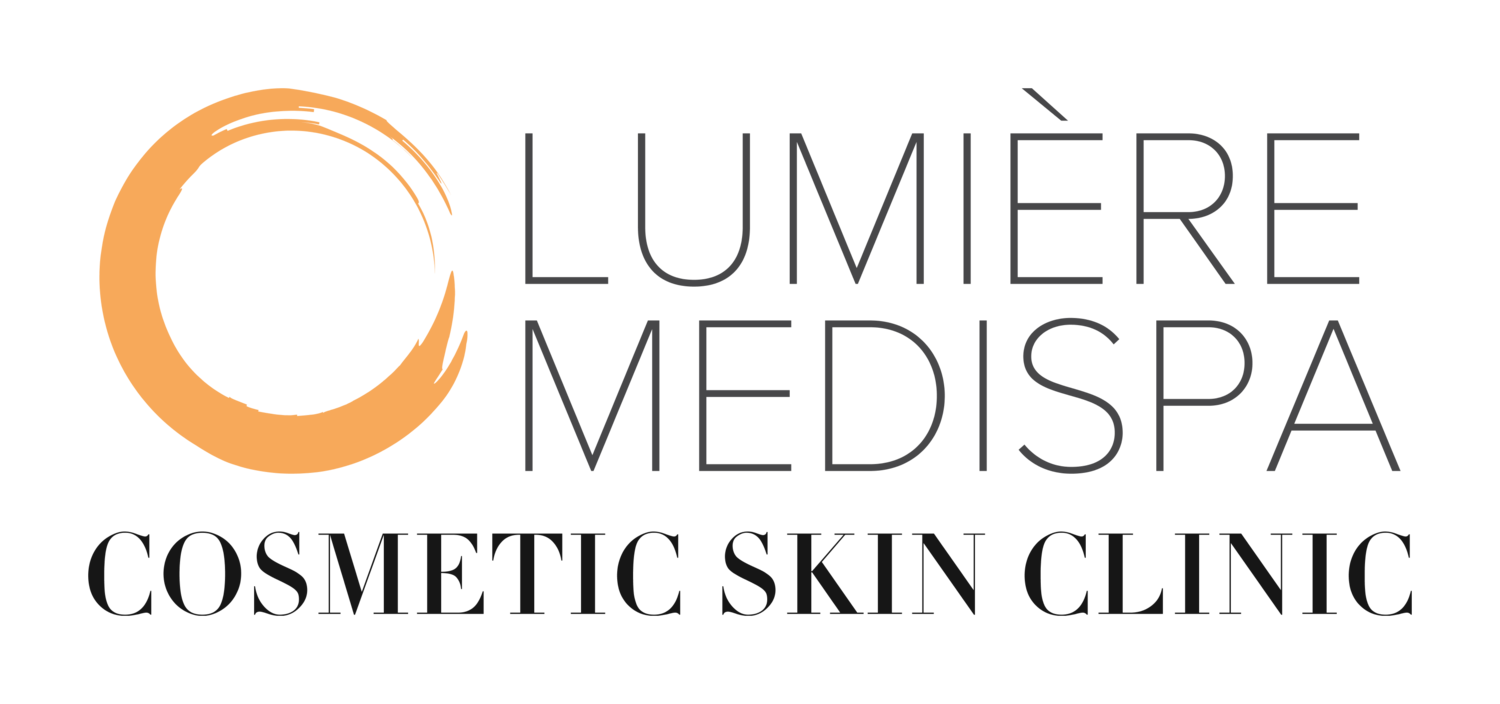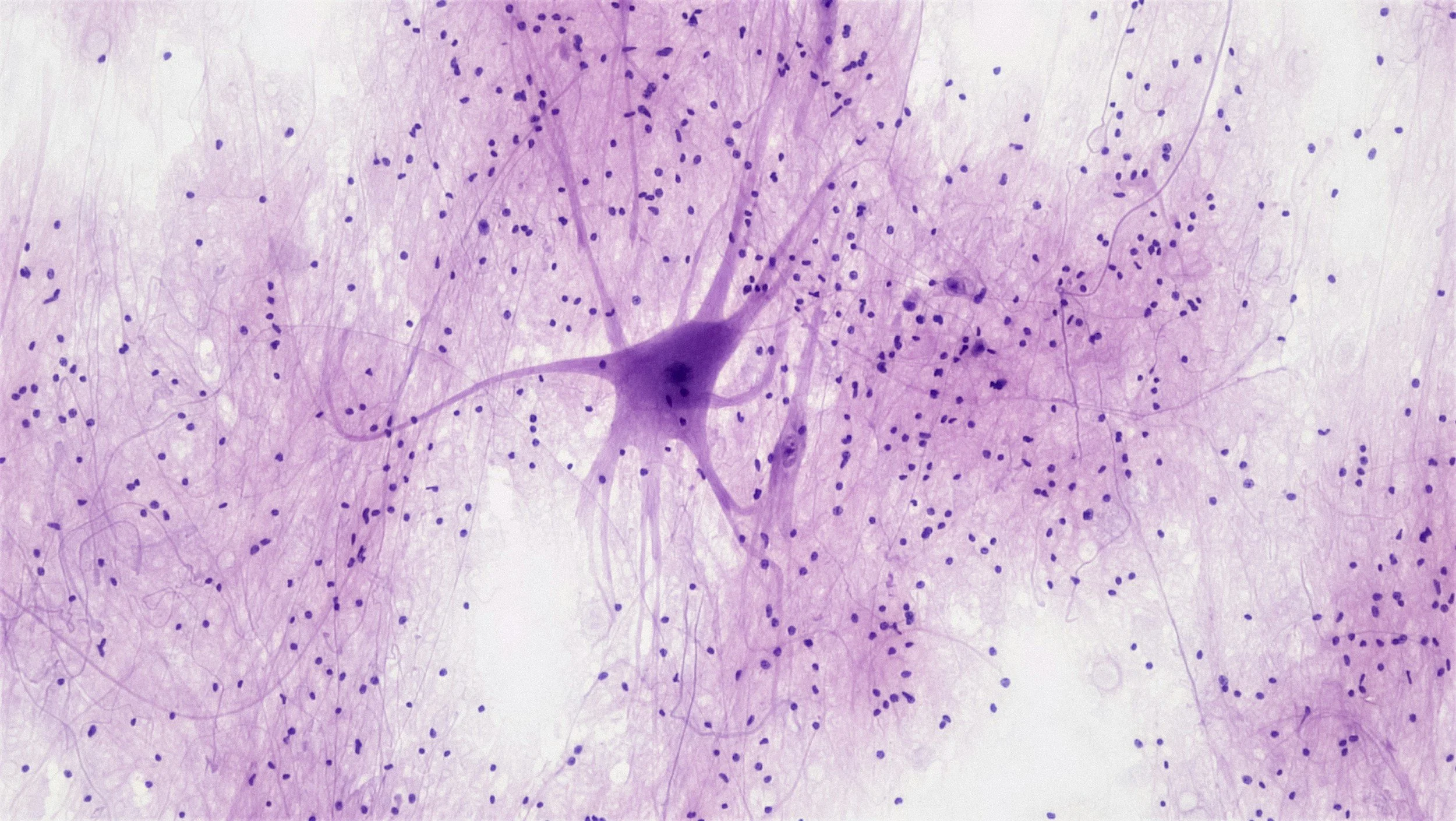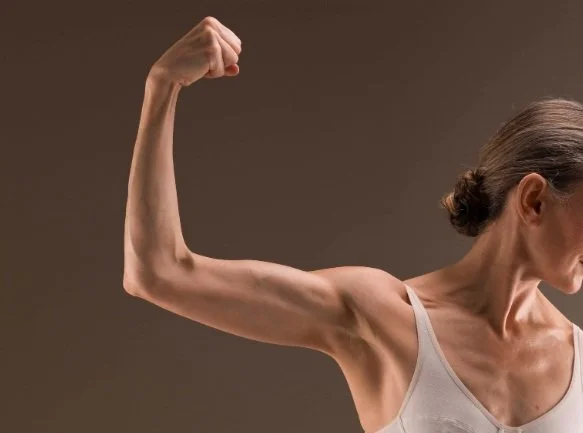Have you noticed more aches and pains, a little less bounce in your step, or groaned slightly when getting out of a chair? You’re not alone. As we age, our bodies naturally undergo changes, including a gradual loss of muscle mass and strength. Cutting back on cake at your coffee dates might help the waistline, but it’s not quite enough to preserve muscle tone or support long-term vitality. Age-related muscle loss, which is also known as sarcopenia, can begin as early as your 30s. The good news is: it’s not inevitable. In this article, we’ll explore why we lose muscle with age, the signs to look out for, and most importantly, what you can do to protect and rebuild strength at any age.
What Is Age-Related Muscle Loss?
It may feel like building or maintaining muscle becomes more difficult as the years go by. It’s not your imagination, research shows that we reach peak muscle mass around the age of 30. After that, unless we actively work to build and maintain it, we’re essentially “spending” what we’ve already gained in which bone density follows a similar path. Roughly, this makes ages 35-45 a make-or-break decade (shifting to about 40-50 for men). If we skip daily movement, strength work and cardio, muscle tissue shrinks and cardiovascular capacity drops by roughly 10 % each decade.
Sarcopenia is a common, age-related condition where skeletal muscles gradually shrink, weaken and lose efficiency. Contributing factors include hormonal shifts, chronic low-grade inflammation, physical inactivity, and inadequate protein intake that accumulate over the lifespan.
But here’s the key takeaway: while muscle loss is common with age, it’s not irreversible and with the right strategy, you can slow it down, stop it, and even reverse it.
Why Does Muscle Loss Happen?
There isn’t a single reason our muscles change with age, it’s the result of a mix of hormonal shifts, lifestyle changes, and cellular processes that unfold beneath the surface. For women, one of the biggest contributors is the decline of oestrogen during and after menopause, compared to men who are affected mainly by the decline of testosterone. Decreased physical activity, poor protein intake and neurological and cellular changes in ageing muscle tissue all contribute to muscle depletion with aging. Let’s explore this in more detail:
Hormonal Changes : Oestrogen
Oestrogen is often recognised for its role in reproductive health, but its influence goes far beyond that, especially when it comes to maintaining muscle strength and function. This vital hormone plays a key role in regulating muscle metabolism, supporting the repair and regeneration of muscle fibres, and protecting muscle tissue from inflammation and cell damage.
One of oestrogen's most important benefits is its ability to preserve muscle quality. It helps muscle fibres contract effectively, directly contributing to overall strength, endurance, and physical performance. Oestrogen also influences satellite cells which are specialised cells essential for muscle repair and recovery after injury.
As women age and approach menopause, oestrogen levels naturally decline. This hormonal drop is closely linked to a noticeable reduction in muscle mass, strength, and function, even in women who maintain consistent levels of physical activity. Without sufficient oestrogen, muscles become more prone to atrophy, heal more slowly, and lose some of their functional capacity.
These changes contribute to the accelerated loss of muscle strength commonly seen in postmenopausal women, making hormonal health a crucial factor in staying strong, active, and resilient as we age.
Hormonal Changes : Testosterone
Testosterone is the primary male sex hormone and a powerful driver of muscle growth, strength, and physical performance throughout a man’s life. It stimulates muscle protein synthesis, the body’s natural process for building and repairing muscle tissue.
Higher testosterone levels during adolescence and early adulthood help men develop greater lean muscle mass, improved strength, and enhanced athletic performance. Testosterone also supports neuromuscular function, fat distribution, energy levels, and overall vitality.
However, from around the late 30s or early 40s, testosterone levels gradually begin to decline which is a natural process that can significantly impact muscle mass and strength. Reduced testosterone is often linked to increased fatigue, a higher accumulation of body fat, and a greater risk of muscle loss (sarcopenia) as men age. In some cases, low testosterone can also affect motivation, mood, and the ability to engage in regular exercise, which further accelerates muscle decline.
The good news? Maintaining healthy testosterone levels through lifestyle factors like resistance training, quality sleep, optimal nutrition, and when medically appropriate, testosterone support, can help preserve muscle strength, energy, and long-term physical health in men.
Decreased physical activity and resistance training
It might seem obvious that less exercise or resistance training leads to muscle loss. But have you ever wondered what’s really happening inside your body? Reduced physical activity causes muscle atrophy, a process where muscle tissue shrinks or breaks down over time. Simply put, your muscles are highly adaptive. When they aren't being challenged through regular resistance training or exercise, your body starts to break them down to conserve energy. It’s your body’s way of saying, “If you’re not using these muscles, you don’t need them in their current size or strength.” As a result, you experience a gradual loss of muscle mass and strength which is a key factor behind age-related muscle decline and weakness.
Poor protein intake or sub-optimal nutrition
Protein plays a vital role in building, maintaining, and protecting your muscle mass and without enough of it, your body simply can’t keep up. Protein is made up of amino acids, the essential building blocks your body relies on to repair and grow muscle tissue. Even with regular exercise, if your protein intake is consistently too low, your body may start breaking down existing muscle to access those amino acids for other critical functions like producing hormones and enzymes, supporting immune health, repairing cells and tissues, and regulating fluid balance. This process, known as muscle catabolism, can lead to muscle wasting which is the gradual loss of muscle mass and strength. This makes it harder to stay strong, active, and resilient as you age.
Neurological and cellular changes in aging muscle tissue
Muscle loss also comes from hidden changes happening inside our muscles. One big change is that the nerve cells that control muscle movement, called motor neurons, slowly decline. When these nerves weaken, the muscle fibres they control stop working properly and start to shrink. At the same time, our muscles lose some of their natural ability to repair and rebuild themselves. This happens because the special cells responsible for muscle repair, known as satellite cells, also decrease in number and activity.
Ageing muscles also deal with more stress and inflammation, which can damage them over time. On top of that, the tiny power sources inside our muscle cells, called mitochondria, don’t work as well as they used to. This means our muscles produce less energy, making it harder to stay strong and full of energy. All these changes happening under the surface make it more difficult to keep muscle strength as the years go by. But the good news is, understanding what’s happening is the first step to protecting your muscles and staying strong, active, and independent at any age.
How Do You Know If You’re Losing Muscle?
The signs of muscle loss can be gradual, and many people don’t recognise them until they start affecting daily life. You might notice that everyday tasks feel more effortful, like climbing stairs or lifting things you once handled with ease. You may feel more fatigued than usual or find it harder to recover after a workout or minor injury. Over time, your body composition may shift to less muscle tone, more fat and your metabolism might slow, making it easier to gain weight and harder to lose it.
Ignoring these signs can lead to more serious consequences later on, such as reduced mobility, higher risk of falls or fractures, and increased vulnerability to chronic conditions like diabetes, osteoporosis, or cardiovascular disease. But it’s never too late to take action.
How to Fight Back: Preventing and Reversing Muscle Loss
The good news is that there are steps you can take to prevent and even reverse the effects of muscle loss. Here are some suggestions to get you started :
Strength Training: Strength training is one of the best ways to stay strong, healthy, and energised, and it’s much more approachable than many people think. You don’t need to lift heavy weights at the gym to build strength. Starting with light hand weights (1.5 or 2kg) or joining group classes like Zumba is a simple way to begin. Fun activities like swimming, rock climbing, or paddleboarding also challenge your muscles and improve strength. Just 2-3 sessions a week can make a real difference to your health and confidence.
Protein-Rich Diet: A balanced diet is one of the most powerful foundations for a healthy lifestyle. A great place to start is by following the NHS Eatwell Guide, which offers a simple way to build nutritious meals. Of course, if you have specific dietary needs or health conditions, it’s important to adjust your food choices to suit your body. When it comes to protein, most adults should aim for around 0.8 to 1 gram of protein per kilogram of body weight per day. For example, if you weigh 70kg, that’s roughly 56 to 70 grams of protein daily. Protein-rich foods to include in your diet are meat, fish, eggs, dairy products, nuts, seeds, legumes, and soy-based products. Making protein a regular part of your meals helps support strength, energy levels, and overall wellbeing.
Lifestyle Factors: Sleep, hydration, and stress management are often overlooked, but they’re essential for preventing muscle loss and keeping your muscles strong and healthy. Quality sleep is when your body gets to work, releasing growth hormones to repair and rebuild muscle tissue , making deep, restful sleep a non-negotiable for muscle maintenance. Staying hydrated is just as important. Water keeps your cells functioning properly, helps transport nutrients, and lubricates your joints, which are all key factors for effective workouts and muscle recovery. But it’s not just about what you do physically. Chronic stress raises cortisol levels, which is a hormone that can actually break down muscle and slow down muscle growth. That’s why managing stress through simple practices like mindfulness, regular exercise, or relaxation techniques is vital for protecting your muscles and supporting your overall health.
Medical Support: If you’ve noticed that everyday tasks are becoming harder due to muscle loss or any of the symptoms mentioned above, don’t ignore it. We strongly recommend speaking to your GP or seeking expert medical advice to help protect your strength and stay active.
Introducing EMSCULPT: Non-Surgical Muscle Toning in Oxford
Alongside lifestyle and diet, there are advanced technologies that can support your goals, especially if you’re looking for faster or more targeted results. At Lumière Medi Spa Oxford, we’re proud to offer EMSCULPT, a non-invasive, clinically proven treatment that helps build muscle and reduce fat in key areas like the abs, buttocks, thighs, arms, and calves.
Using HIFEM (High-Intensity Focused Electromagnetic) technology, EMSCULPT stimulates powerful muscle contractions, far more than what you could achieve voluntarily. In fact, just one session is equivalent to doing 20,000 crunches or squats. It’s completely non-surgical, requires no downtime, and delivers visible results within a few sessions.
Whether you’re looking to complement your exercise routine, kickstart your muscle-building journey, or simply feel more confident in your body, EMSCULPT is a powerful option for reclaiming strength and tone. If you’re curious about how EMSCULPT could help you, why not book a consultation with one of our experts? It’s the perfect way to learn more and find out if this treatment is right for you.
Reclaim Your Strength, Confidence and Vitality
Age-related muscle loss may be a natural part of getting older, but it doesn’t have to define how you feel, move, or live. By understanding the factors behind muscle decline, from hormonal changes to lifestyle habits, you can take proactive steps to protect your strength, energy, and independence for years to come. Whether it’s through resistance training, a protein-rich diet, better sleep, stress management, or innovative treatments like EMSCULPT, there are plenty of ways to stay strong, active, and confident at every stage of life. Remember, it’s never too late to start investing in your muscle health, your future self will thank you.

















